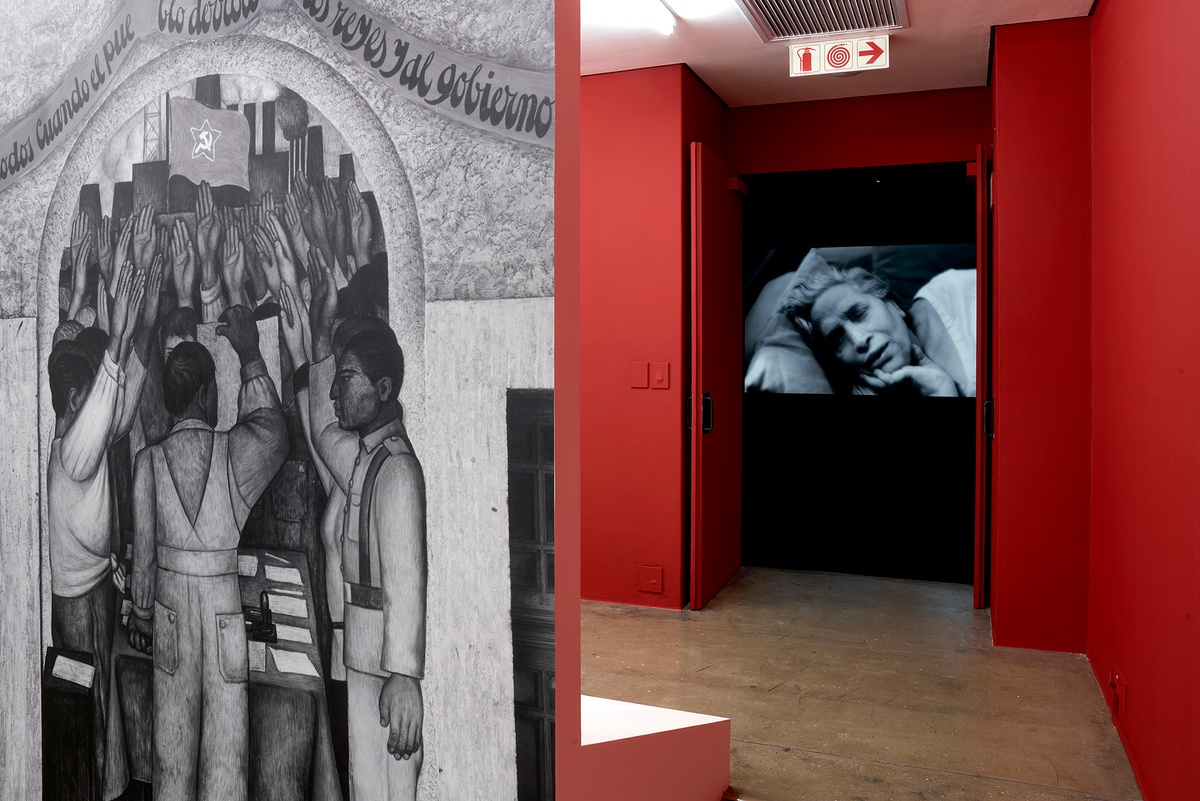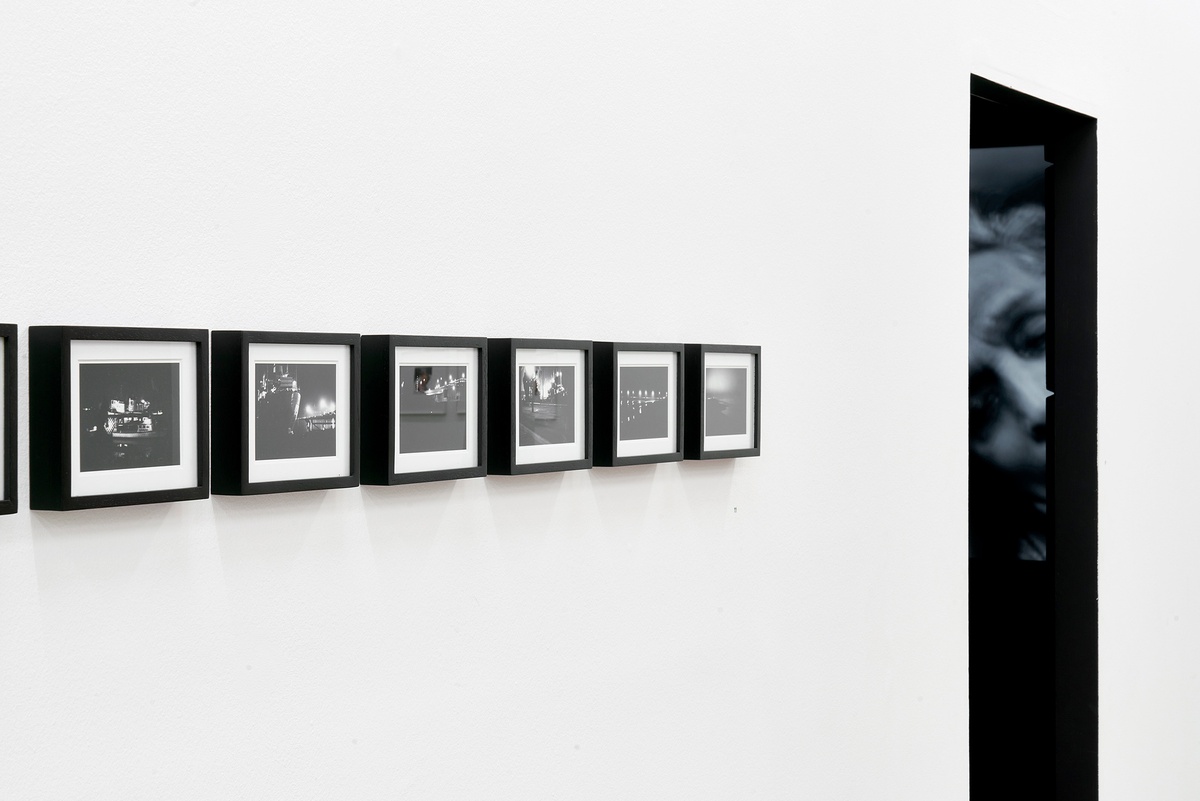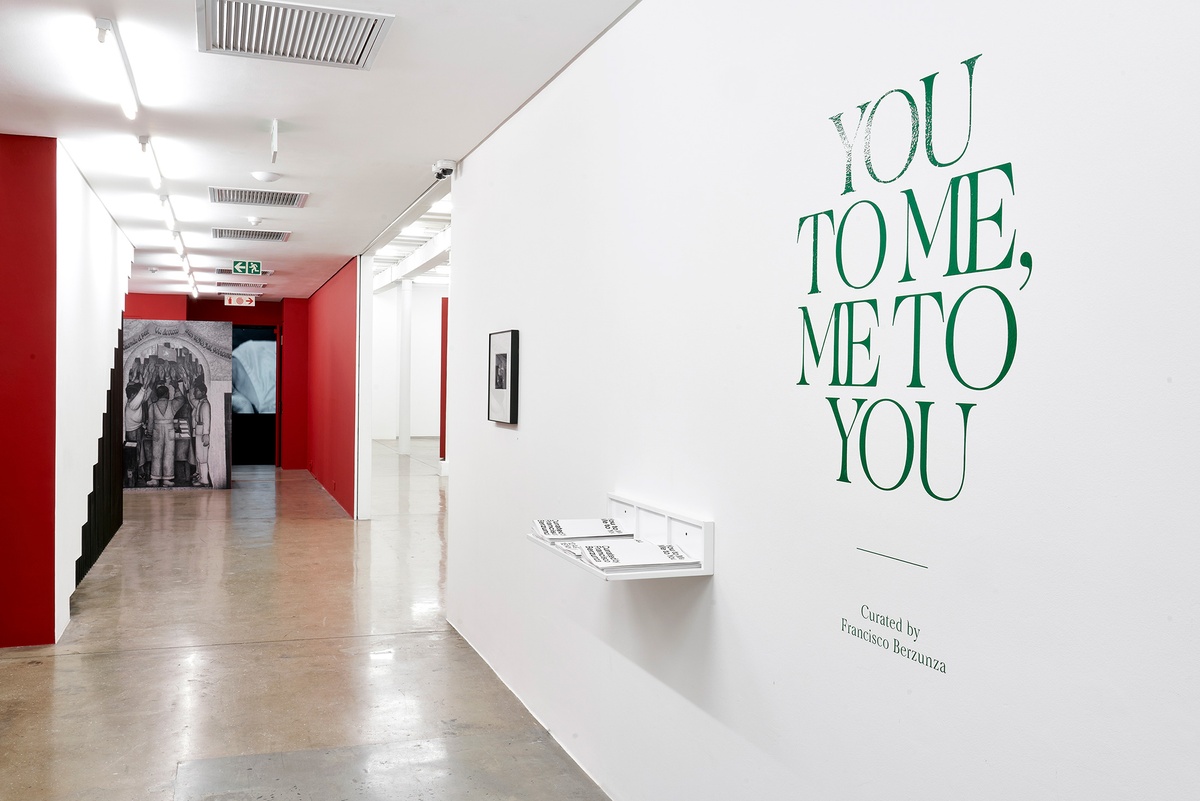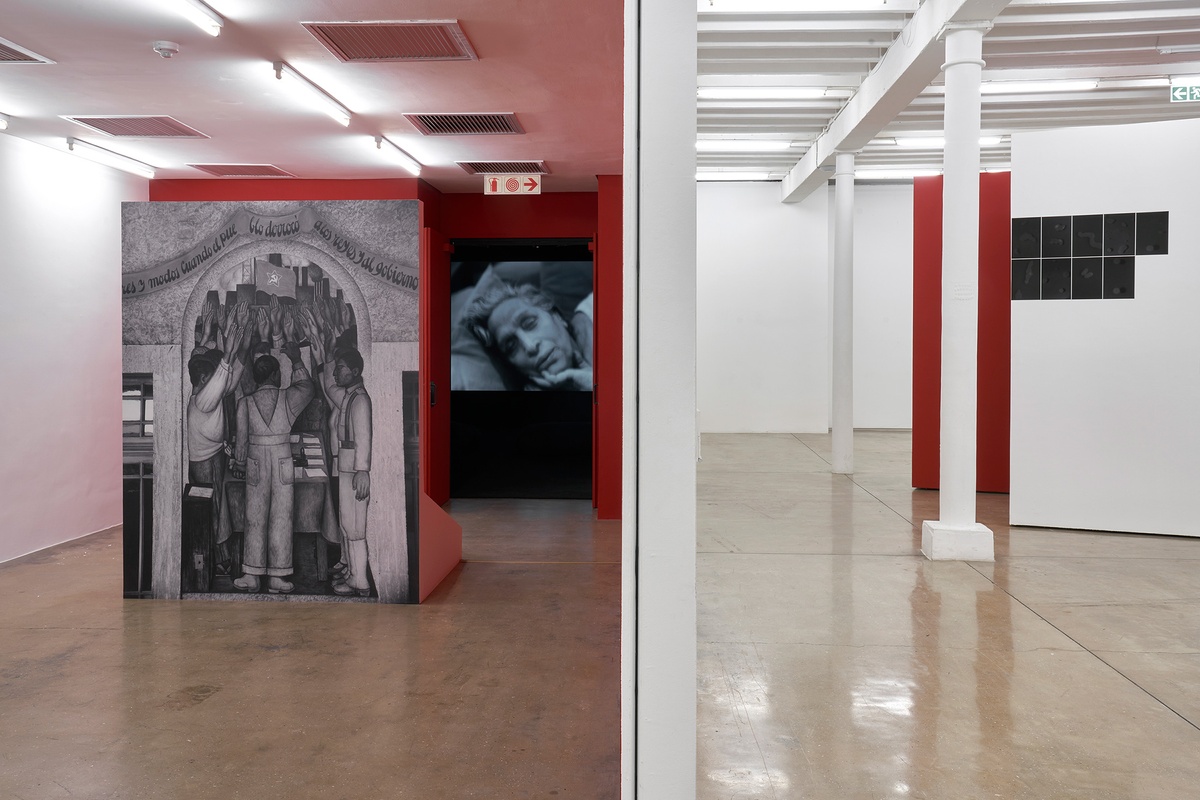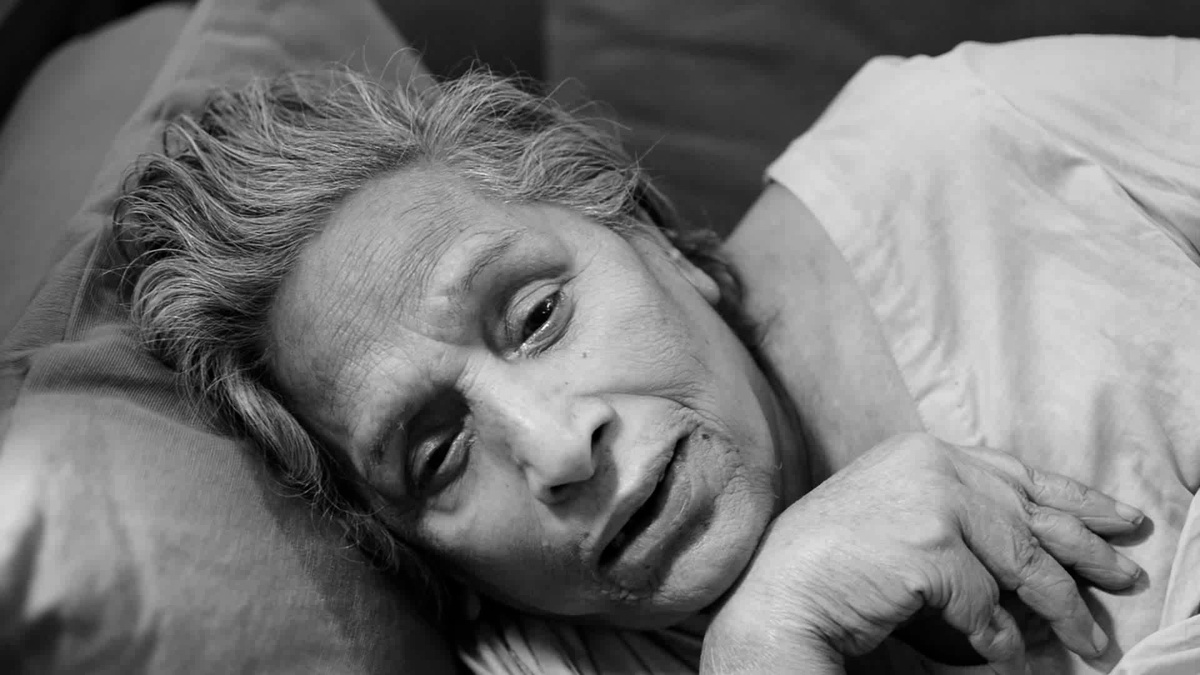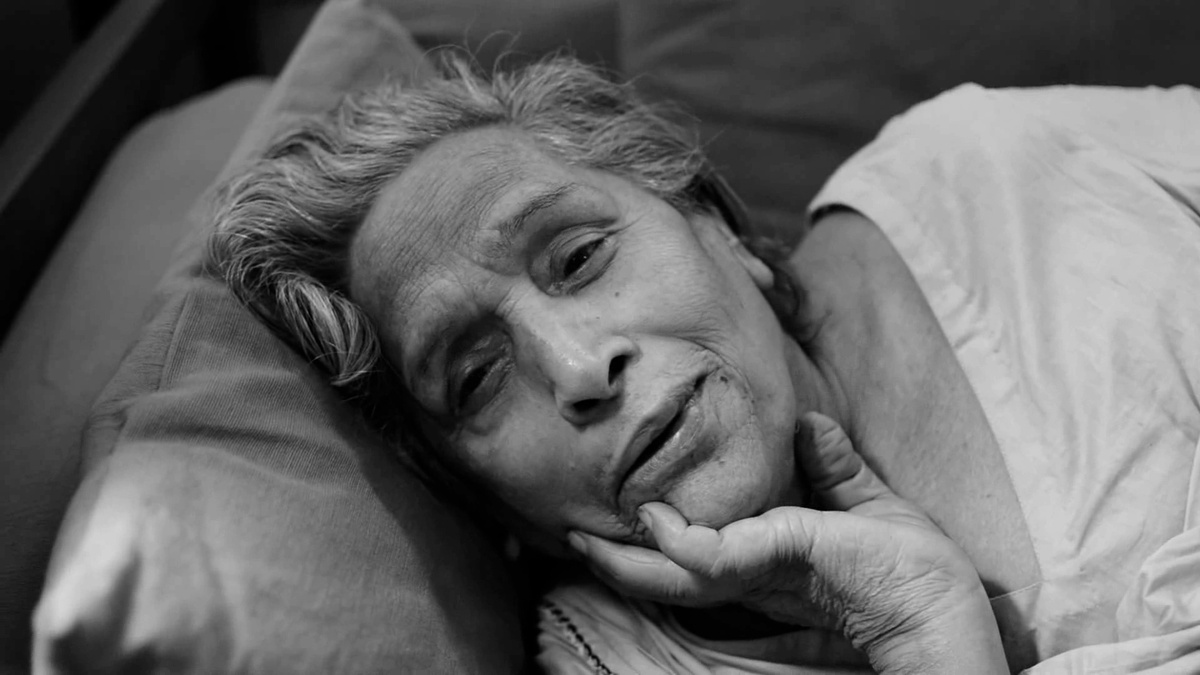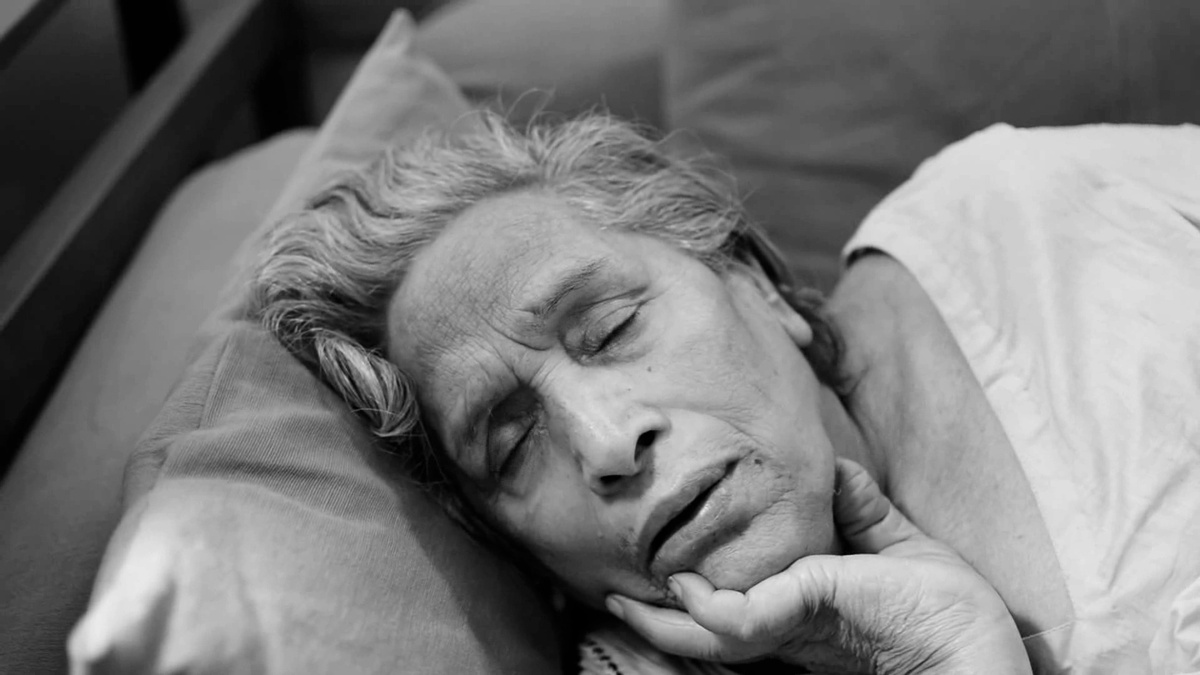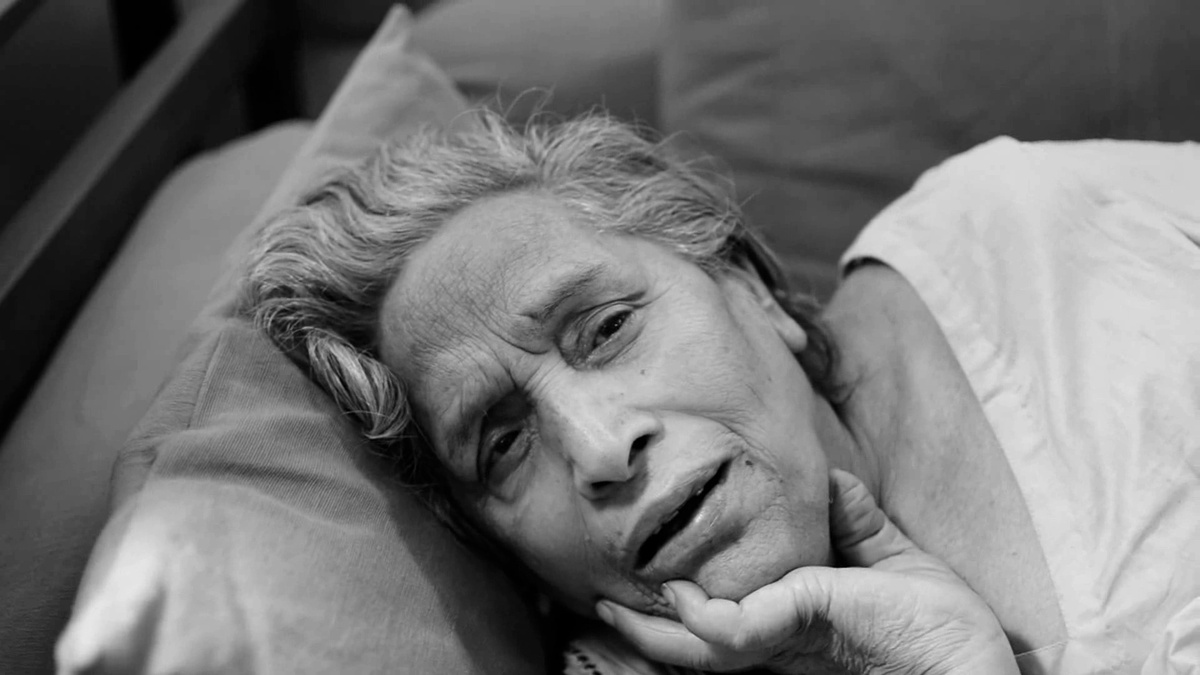Dayanita Singh
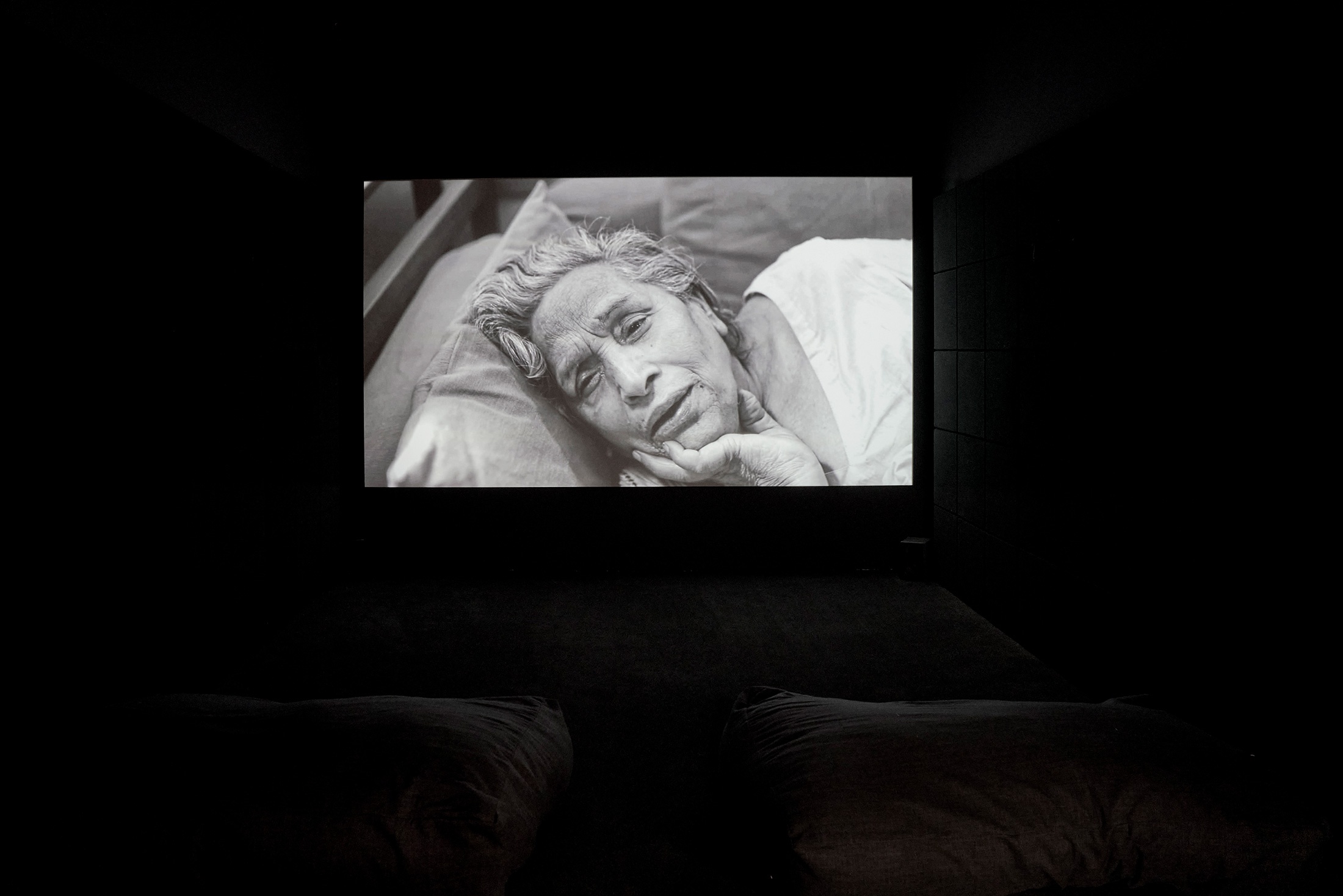
Excerpt from a conversation with Dayanita Singh (D.S.), Josh Ginsburg (J.G.), and Francisco Berzunza (F.B.) held online in preparation for You to Me, Me to You, 27 July 2023:
D.S. I met Mona in 1989, and I photographed her until she passed away in 2017. Even now, she’s still very present in my work, leading it almost. Centre stage in my Museum of Dance but also enters my family portraits and File Room works and these montages appear, almost by themselves.
Mona was my best friend.
We made a book together in 2001, and I continued photographing her because that’s what I do, and that’s what she liked. This moving still image of Mona in this exhibition was made by chance. I had not set up to make a film. I was not prepared to make a film – that’s not what I do. But I’ve always missed the sound in photographs…or more than sound, I’ve missed the breath. And how the face changes… How to bring a little breath and a little sound into the photograph? I wanted to find this for years, but didn’t know how I could do it. Any conscious attempt seemed certain to come off as intentionally ‘arty’. It’s as though chance heard me and presented this work to me.
Mona had come one day to the studio. She often came in the summer because I had air-conditioning and it would cool her down. She was lying on the bed, and I was taking photos of her just by the by, as I often did. I played her favourite song, which I found online. I found it and I played it, and I was taking her portrait and I forgot to lift my finger, or I pressed the wrong button; I’m still not even sure what happened.
At first, Mona is not able to hear or quite understand what is going on. She’s trying to remember it, and then she finds it – and she becomes the song. At some point, I lifted my finger and I continued making pictures. It was only when I sat down that night to review the images, to look at the stills I had made that day, that, suddenly, there was this piece. Just imagine! I’m looking at still image after still image. And then…I see this. I see it again and I see it again. The next day, I told Mona that she had to come back – something had happened. She saw it a hundred times over, and she was crying and I was crying, and that’s when I thought that we have created something – and whatever this something was, it wasn’t about taking pictures of her. This was something else.
As for love, I could say, Mona was – is – the big love of my life. Mona was sometimes my mother and sometimes my child. She showed me how to live outside the box. I could show you all those photographs I have taken of Mona. I could make a museum for Mona. But this moving still image, I feel, is the culmination of three decades of work – that all the other work could be put aside. It’s not great resolution, it’s not great sound. But when I heard about this exhibition, I thought – this is what I’d like to show.
Mona was the most unique person I’ve known in my life. It would be fair to say that I’m the artist (or whatever other name you want to give for what it is that I do) in no small part because of Mona. She lived. Against all the odds.
J.G. It’s such a beautiful story. I was going to ask after the phrase ‘moving still image’, but that no longer needs qualification – it’s an astonishing situation. And what’s fascinating is that both parties were unselfconscious by default – because neither of you knew this was happening.
D.S. This unselfconsciousness and intimacy – how do we get to that in photography? It is almost impossible. There’s a photographer and there’s their beloved, and there is self-consciousness on the part of the photographer and the person being photographed. And yet when it happens, like here in this moving still image, it’s such a gift. Because we didn’t know this was happening, we were both so unselfconscious.
J.G. Considering the usual dynamic of the photographer and the subject, here, in this work, there’s something else going on. There’s this unique case where neither party is the subject because, in some sense, Mona is also photographing – or witnessing – you. You have to receive this unexpected event and be open to it. I’m also curious about the fact that you photographed Mona over a life. Does Mona function as a photographer of you by default? Because of this lifetime of engagement?
D.S. Mona was very aware of the camera. In time, people may ask, did she construct all this in the graveyard for the camera? In 2017, I was at the Guggenheim in Venice, and I got three missed calls from Mona. But because I was on a guided tour, I couldn’t take the call. So I came out, got onto the vaporetto to Giudecca, and called her. Her nephew picked up and said that something had happened. We’ve been trying to call you, he said, we think she’s going. And I said, it’s not possible. She’ll wait for me. I’m coming back in five days. I asked him to put her on speaker phone. He put her on video. When I saw her, I realised that this was serious. Mona, Mona, what are you doing? Wait for me. I’m coming, I’m coming. All this time, somehow, I was taking screenshots while I was talking to her, and she was opening her eyes and trying to say something but was unable to talk. And then, I started to get hysterical and luckily I had friends with me on the vaporetto, holding me. I kept saying, Mona, Mona, talk to me, talk to me. Her nephew took the phone and told me, she’s passed. Even in her death, Mona waited. She realised the importance of a life documented. She realised that even her passing somehow had to be documented.
That is why I say that I am informed by her – my work, my work ethic, everything – the way I think about museums, even, you could stretch it that far. Mona built a house in a graveyard because she was thrown out of her community. Besides, she was so unique that she couldn’t be part of any community. She built herself a house in the graveyard where she ‘claimed’ she had some aunts buried. She said, I’m a caretaker. It grew and it grew. She made things out of what she had and from her dreams.
J.G. She lives amongst those that live forever.
D.S. Yes. She’s buried there too now. She’s buried in her house.
J.G. In both a conscious and unselfconscious way, she became some kind of configuration of self. It sounds to me that Mona was, whether in front of the camera or not in front of the camera, that life was continuous. There was no effect of the gaze; that she was entirely comfortable?
D.S. Or it was entirely for the camera – life.
J.G. As if life was all lived in the realm of perception? That is a beautiful notion – to live in such a way that the gaze is integrated. That it is continuous as opposed to a life that is faceted by a gaze, whether you become alive for the camera or you don’t become alive, whether you’re alive continuously – whatever the case, here it is integrated. The feeling you’re perhaps responding to is one of freedom. A person pushed to the perimeter of the periphery of society, who finds an ultimate expression of freedom.
D.S. Absolutely. With so few means, she truly freed herself from society. Her courage is unmatched, to go and live in a graveyard and then build a house and live there with her monkeys and ducks and dogs. Mona is a remarkable person, not like anybody else.
I sometimes feel I have failed, not being able to put the pieces together or articulate them. For the book’s release in 2001, since Scalo is a Swiss publisher, I said to her, Let me ask the Swiss Ambassador if he will launch your book. In my mind, I was thinking, would the Swiss Ambassador agree to release her book at the Swiss Embassy? When he agreed, I thought this was fantastic, and told Mona. I’m not going to the Swiss Embassy, was Mona’s reply. If he wants to release my book, he has to come to the graveyard in his black Mercedes with the red-and-white Swiss flag flying. I said, you know, he’s not going to come to the graveyard. And anyway, why are you asking me to do that? And she said, Because, at the Swiss Embassy, all your friends will come, they will appreciate what you have done and they will shake my hands and that’s it. But if it’s in the graveyard, then all the local police stations will know that Mona is an important person and that they need security. You’ll have to inform all the police that the Ambassador is coming. And so that’s what happened. The Swiss Ambassador came to the graveyard to launch the book. Mona decorated the entire graveyard with marigold…even the ducks were made to wear marigold garlands. That’s where her book was released.
(I’m very happy to be sharing this with you because I don’t know, maybe the time is right, maybe enough time has passed. I haven’t been able to put the pieces together like this.)
J.G. On a slightly adjacent note, it’s both a really beautiful and powerful gesture, but also very pragmatic. The artwork, this collaborative artwork, went on to have a real effect in the community because it was not isolated in the world of books. The launch served a function beyond the book: evidencing and communicating respect and value.
D.S. And we did this a second time, following the precedent Mona had set. I was invited to the French Ambassador’s home to receive an award from the French government [editor’s note: Singh was awarded the Chevalier dans l’Ordre des Arts et des Lettres in 2014]. At the time, I had an exhibition of my book objects at the National Museum. I’d like you to come there, I told the Ambassador. It took some persuasion but he came to the National Museum, where Mona was the chief guest sitting right in front in a wheelchair, whereupon the Ambassador kissed her hand in front of all the staff and guests of the National Museum.
Yes, Mona is still omnipresent.
When you are an outcast among the outcasts, you are really pushed to the limit. You have the audacity to demand that the Swiss Ambassador will come here to release my book! Or you’re alive, you stay alive, until you know that your photographer is somehow documenting your death – that it has been witnessed by the same person who has witnessed most of your life. That’s an amazing character.
F.B. In the context of this work, Dayanita, I remember you once told me about the song, which is quite important. Can you tell us more about it? What is its title? Perhaps we can research it further.
D.S. The song is called Rasik Balma. It is from the film Chori Chori. The words, in English, would be –
My dear beloved
Why did you connect your heart to mine
like a disease that will never leave me
my dear beloved.
It’s from a wonderful film. The actress who played in the film – Mona actually met her once – her name was Nargis and she was probably the most beautiful woman of Indian cinema. This was Mona’s favourite song.
There’s a word in Hindi – ‘dard’. Mona seems to me like the epitome of dard. Sweet pain is not quite the same. It’s that overwhelming emotion when you see a beautiful flower or a sunset – or a piece of music, more a piece of music – when you’re reduced to tears and you forget yourself. You forget where you are, what body you’re in. It’s another kind of experience. This song is very much about dard. Mona seems to me like the epitome of dard.
J.G. …
What are you working on at the moment?
D.S. I’m working on these Montages. They are architecture ones, but Mona is probably invading those as well. It’s like she won’t leave. I don’t think she’ll ever leave, you know. I made these Montages – of Mona in family portraits – which she would love, and of Mona and her Bollywood stars. She would be most thrilled about those. However, I suspect she’s going to enter the architecture Montages as well.
It’s interesting that this exhibition came up at this time. I met someone that I was deeply in love with twenty-two years ago and I’m deeply in love with him again with absolutely no contact in between. Through this experience, I’m thinking a lot about how intimacy and romantic love is represented. I’ve been looking at all this photography and realising there is a problem: there is always a photographer and a subject. What happens when both people are photographers and they’re working in an unselfconscious way? Where are the love stories that are not about a photographer and a subject? When both are both or neither. I’m very interested in intimacy and love. Some things are in the process of emerging. I have to study it more.
F.B. I have one final question before I forget, Dayanita. The man who the show is about, asked me something and I’m not sure how to honour it. He said, please do not turn me into a character. But as I’ve been writing these texts, it’s unavoidable, he’s become a character. And my question is, is Mona a character?
D.S. Certainly not to me, but I could imagine that for the viewer she is. Though she wouldn’t see herself as a character, the reader could, the viewer could. Though Mona has a knack of slipping away from categories.
J.G. What’s interesting about the case with Dayanita and Mona, in relation to this show and your question, Francisco, is: where is the reciprocal edge in your story? Because Mona speaks back. Mona controls the lens. There’s a reciprocity there that she’s aware of and in conversation with.
D.S. She’s actually leading the process.
J.G. Yes, there’s a director-actor relationship, where both parties are subject to each other. And the film – the moving still image – is the quintessential moment within that because it collects you both, unannounced. So Fran, I wonder if the question is, where’s this man’s voice? He who is the subject of your exhibition? That may reconcile that question of characterising him because if he can speak back, then you’re not characterising him. He is present and has a voice of his own.
F.B. Yes, of course. Well, here we are.
D.S. Here We Are, that’s a good title.
J.G. It is! What you’re moving through now sounds like a beautiful twenty-two-year reflection on where you were and where you are now.
D.S. In some ways, twenty-two years just vanished. Twenty-two years didn’t happen at all, or else we had been together for all this time, without knowing it. I was experiencing this at the time when I was sent the email for this show. This is why I asked for a conversation. This felt like a sign: Why is someone curating a show about love and why is he asking me to be part of it?
F.B. I have to say that this exhibition has a very mystical quality. We just carry on with the flow of things.
D.S. That’s what I’m doing. I’m going with the flow of love. I really miss Mona because she met him twenty-two years ago and she asked him – and this connects to Mona’s song, Rasik Balma – is this English love or Hindustani love? You have to tell me what the difference is, he replied. She said, If you don’t know, then there’s no point telling you, or something like that. Mona really grilled him to know whether he could become capable of Hindustani love, as he is English, but she also adored him. He came to Delhi last week, twenty-two years later. I wanted to share this meeting with her. The whole graveyard would have been full of marigold to receive him. She would be so happy that what she predicted twenty-two years ago came true, has been true. This makes me miss her terribly because, otherwise, Mona’s in my heart. She’s with me all the time.*
* Throughout this conversation with Dayanita Singh we talked about how public scrutiny and fascination with the state of Mona’s physical body and status pulled focus away from Mona, herself: her extraordinary, rebellious, and revolutionary life. At the same time, we worried together if making no mention of Mona’s identity undermined her courage and diluted the bigotry she faced. We landed on this footnote: “I am the third sex,” Mona told Singh. “I am not a man trying to be a woman. It is your society’s problem that you only recognise two sexes.” Mona Ahmed was born in 1947 and died in 2017.
b.1961, New Delhi
To Dayanita Singh, photography proposes itself not as static image but as literature, each exposure a written phrase in an expanding narrative. She calls herself a “bookmaker working with photographs,” yet her books are seldom pages held between a cover as one might expect. Rather, they are more often wooden structures – or "photographic architecture" – in which collected images can be arranged and rearranged. These “unbound books”, some small and box-like, others large folding screens, are at once artwork, archive and memory objects. She calls them museums, these sculptural books, each of which follow such indefinite themes as chance and continuity. Among them are the Museum of Machines and the unfinished Ongoing Museum, a Little Ladies Museum and the Museum of Embraces. Singh’s discrete photographs, taken over some thirty years, offer a vision of Indian life without cliché or sentimentality – most are intimate portraits or empty interior scenes; all are lyrical in affect. Collected in their respective museums, they retain a fluidity denied most photographs, consigned as they so often are to books or to the walls on which they hang.
